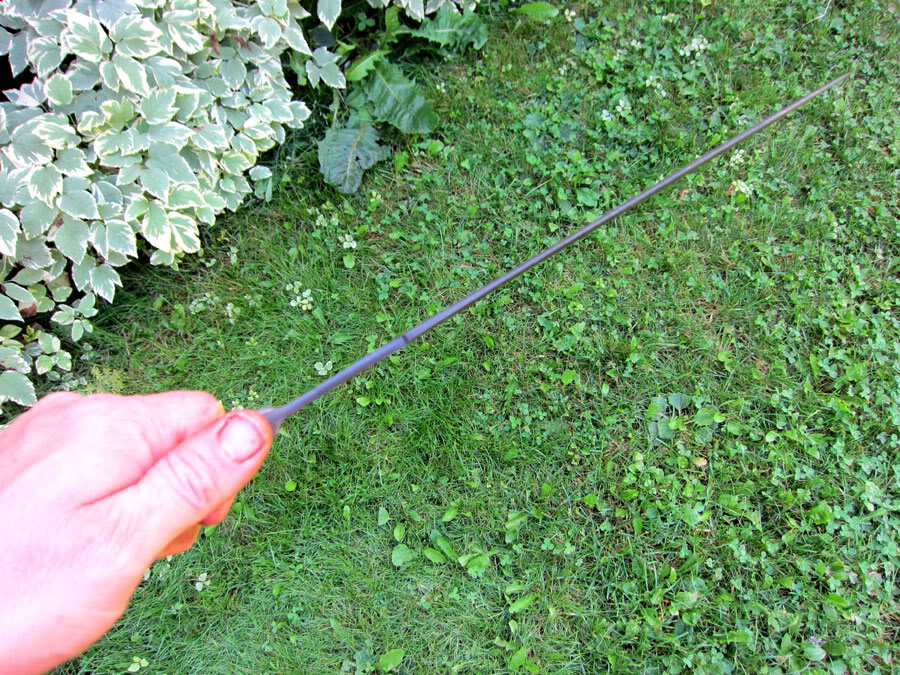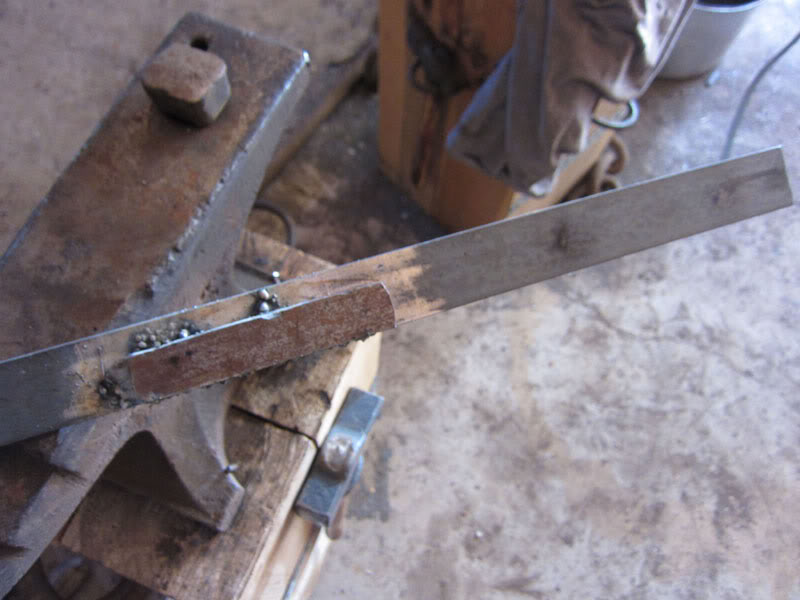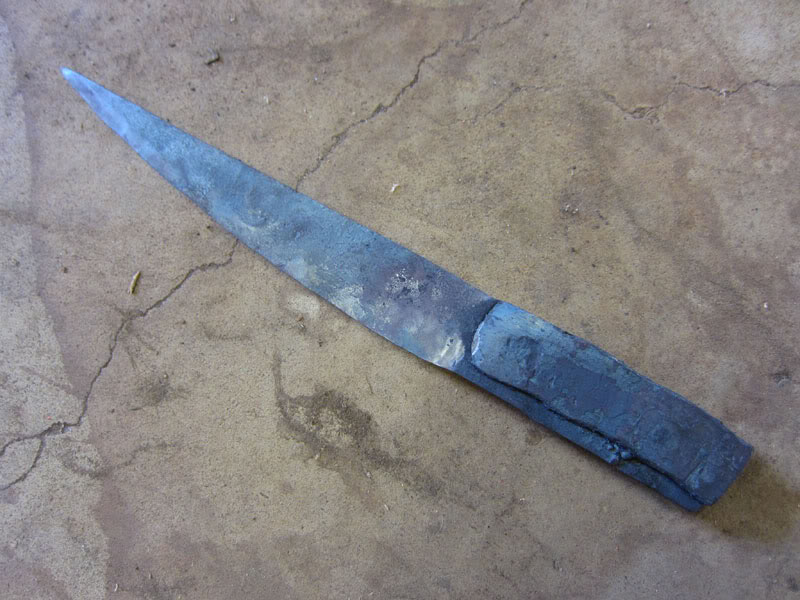I'm typically not interested in strict historical reconstructions therefore mine deviates in a couple of respects. First... the fittings were probably individually forge welded while I basically welded on a couple of big wrought iron bars in the vicinity of the handle and bolsters (see pics). Also.... after attending Blade this year I've become interested in thin, light bladed, well balanced fighting knives. I love the graceful elegance of the thin blade with nice distal taper. As well as the speed of handling. Therefore mine doesn't have the typical 1/4" spine but a hair over 1/8". I also elected for a morticed, hidden tang contruction of the scales placed between the forge welded bolster and pommel. Mine is also a bit shorter.. some of the historical examples had 15" plus blades.
But the over-all profile and look reflect the spirit of this knife I think.
I'm calling it 'Spanish Dancer' as it is just so graceful, fast and a joy to handle. It is 15.5" long, with 10.5" blade. The steel is Aldo 1084 with multiple edge quenching that brought out some very interesting alloy banding that actually shows some shiny areas (vanadium??) from extended ferric soak. I'm saving the shear steel for the next go at one of these. The balance is right at the bolsters, closer to the handle. The wood is some very unique 'curly black oak burl' given to me by Mr. Mark Farley. I've never seen anything like it. Then there are some buffalo horn spacers.





Here are some construction pics:


